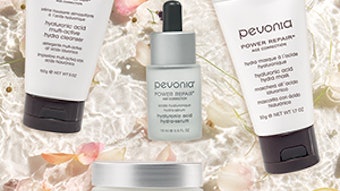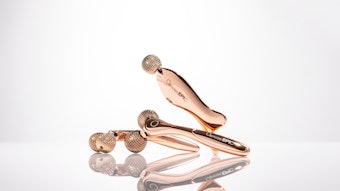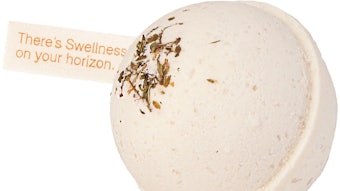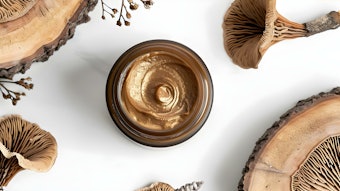
Mindfulness is a hot topic. In 2016, it was the subject of a Time Magazine special edition, and several previous featured articles in Time and many other mainstream news publications. There is finally an acknowledgement, and a heap of scientific validation for this concept that our thoughts can directly cause physical changes in our bodies. So, what exactly do we mean when we say mindful practice or mindfulness; is it just about meditation, or is there something more? And, how on earth does that impact the skin? Before I delve into the ways in which mindful practice affects skin health, let’s go over a brief overview of what mindful practice really is.
What is Mindfulness?
According to mindfulness guru Jon Kabat-Zinn, mindfullness is defined as, “paying attention in a particular way; on purpose, in the present moment, and non-judgmentally. Further, it is about becoming aware of one’s mind & body and living in the here and now by accepting the present, in order to fully appreciate each moment. This attention can be developed through meditation.”
Using this definition, it sounds pretty simple. Just pay attention, be present and don’t judge yourself. This idea seems so easy, yet for many it is so hard to do. One of my favorite expressions of mindful practice relates to anger and our ability to pay attention to the feeling of being angry, yet let them go because it does not serve us to hold onto it. Being angry is like taking poison and waiting for the other person to die. This sounds like a simple thing to do, yet red hot emotions that anger bring to our minds and bodies make it challenging to let go of angry feelings.
To understand mindfulness, we need to consider the relationship between our thoughts and our physical bodies–the mind-brain connection. Our brain is a tangible, physical thing, whereas our mind is something abstract; undefined in scope and reach. I like to think of our brain as the hardware or the computer, and our mind like the internet or some software package we use to operate our computers. What’s really cool about mindful practice is the power we have to recreate ourselves by tapping into the power of our minds. The mind can use the brain to rewire and recreate itself. This area of science is called neuroplasticity, a process in which your brain's neural synapses and pathways are altered as an effect of environmental, behavioral and neural changes. How many of us say things like, “I can’t help it, I’m just wired this way”, or “I just get stressed easily, it’s how my family deals with things”, or “I can’t resist sweets, my body craves them”. All of these statements about qualities which we feel are outside of our control can actually be within our control if we retrain our brains using our minds.
From Buddhism to Medicine
Mindful practice can be found in all types of religions, but many attribute it in its purest form to Eastern and Buddhist practices. Buddhism is based upon being in touch with your own deepest nature and letting it flow out of you, unimpeded, becoming aware and seeing things as they truly are. In fact, Buddha means “one who has awakened to his/her own nature”. Mindfulness is rooted in Taoism and yoga practices, but also reflected in the writings of Emerson, Thoreau, Whitman and Native American wise men. Mindful practice has a big presence in most organized religions.
The major shift in our appreciation for the practice of mindfulness moving from a religious practice to a medical one began in the 1970s when it was introduced to western psychotherapy with tools that utilize breathing techniques, meditation, yoga, guided imagery and even nature walks. The body of scientific evidence began to mount back then, leading us to today, where mindful practice is now a validated and accepted tool in mainstream medical and psychiatric practice.
Mindful Resources
There are many resources for mindful practice available. Some of the most famous elders and experts to learn from are: Thich Nhat Hanh, John Kabat-Zinn, Ken Wilber, Pema Chodron, Jack Kornfield and Daniel Siegel, to name just a few. You can read their books, attend lectures, and follow them on social media. For lighter reading, Mindful Magazine is a favorite of mine, and for those who like to use technology there are apps like Headspace and devices like the Spire that encourage you to focus on meditation and breathing to manage stress.
Uses for Mindfullness
Now you know what mindful practice is, why do we need it? For starters:
• The average American consumes 13+ hours of media per day.
• People switch activities every 3 minutes during the regular work day.
• The American Psychological Association reports that 34% of Americans say that their stress level has increased over the past year.
• Stress shortens teleomores = increased rate of aging.
Take a look at that list of shocking facts. What does it tell you? It tells me that we are spending a lot of time connected to a screen vs. connected to live people or nature. This is leading to increases in stress, which in turn is accelerating the aging process.
For those of you who are not familiar with telomeres, they are the end caps of our DNA strands. They function as little health meters. We are born with nice, long robust telomeres, but they shorten and wear away with age. The longer your telomeres are, the genetically younger you are.
How long can you tolerate not looking at your phone, a computer, radio or television in an average day? When is the last time you waited in line at the supermarket or other service provider without looking at your phone? For most of us, it is a real concern. Mindful practice can be used in so many aspects of our lives, from relationships to weight management. It can dramatically change our quality of life and also the quality of our skin.
Mindfulness and Skin
There’s an emerging field of research around the Gut-Skin-Brain Axis, called psychodermatology, an area of study that focuses on the connections between our thoughts and skin health. When we are stressed, a few things can happen. Our skin can break out in acne flares; we can experience redness and broken capillaries; chronic inflammatory skin conditions like rosacea; or we can get full blown hives. That’s because stress and anxiety signal the adrenal glands to release cortisol. Cortisol is a hormone made by the adrenal glands. It’s function is to provide the body with energy (from a surge of glucose) needed to respond to a stressful situation. It’s part of the fight or flight reaction and is a necessary hormone for our survival.
Unfortunately, many of us are over stimulating our adrenal glands through constant stimulation and stress and produce too much cortisol. (Look back at that stat about hours per day spend on media.) The negative impacts of cortisol include increased oil production in the skin (acne), breakdown of collagen, and signaling of the inflammatory processes, leading to weak and inflamed skin and premature aging.
Mindful Practices
Engaging in daily mindful practices can help ease the stress that leads to compromised skin. You can begin with some small actions. Why not try adopting a few of these activities. Substitute 10 minutes of mindless Facebook scrolling every day for one of the following.
1. Go outside and be quiet in nature. Have no other intention then just sitting or standing outside (preferably with bare feet on the grass) and observing what you see around you. Try this in the sunshine, in the rain, on a hot day, and on a cold day too.
2. Start a gratitude journal. At the end of each day write down 3 things you are grateful for from that day. These can be simple things like light traffic on your ride to work, the perfect juicy peach you enjoyed at lunch, or being thankful for the beauty of the sunset you saw on your drive home.
3. Download a meditation from YouTube and take a few minutes to listen to it in a peaceful place.
4. Practice slow, deep breathing. Sit in a quiet place and take very slow, deep breaths, filling your lungs completely before slowly exhaling. As you do this, visualize taking in positive energy and releasing any stress or negative thoughts you might be feeling at that moment.
5. Try 3 yoga stretches. You can look them up in a book, on demand on your TV, on the internet, or from a class you have taken in the past. Take just 10 minutes for stretching.
6. Do the 5 senses exercise. This can be done anywhere. Take a moment, anytime, anywhere to stop and observe the following: what you see, what you feel, what you hear, what you smell and what you taste. The last exercise is quite enlightening. When is the last time you noticed what you taste when you are not eating? You may be surprised what you notice!
A Powerful Tool
Mindful practice is a powerful tool for skin health! The science says so. People who do it say so. Try incorporating some mindful practice techniques into your daily life and notice how great your skin looks and how much more relaxed you feel. Namaste.
Resources
1. 2013 University of South Carolina Study
2. University of CA Irvine Study from 2008
3. Journal of PLOS one 2013.











